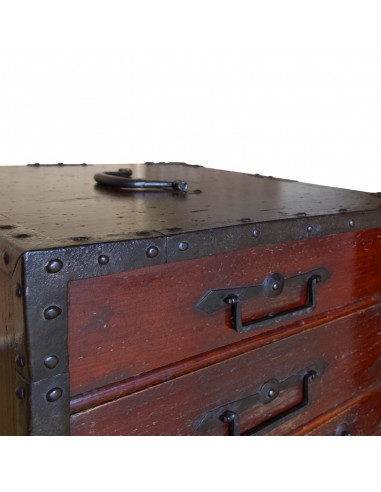Antiker japanischer Tresor Funadansu 39 x 45
Antique Japanese safe (jp. Funadansu, "ship chest"), probably from the Edo period (1603-1868). Width 39 cm, height 45cm, depth 48 cm. Made of wood with metal fittings and carrying handle. Decorated door with lock (key missing). 5 compartments of various sizes. Signs of wear on the back (crack in the wood). Formerly used by sailors as a private safe on the ship (see description below). It was also used as part of the interior decoration of merchant houses. The workmanship and decorative door show the skill of Edo period craftsmen.
The funadansu flourished on the Kitamaebune merchant ships that traveled annually along the Sea of Japan between Edo (Tokyo), Osaka, and Hokkaido. On these ships, the sailors used the funadansu as a private safe on board. They kept important documents such as travel documents and valuables in them. The mobility of the funadansu also made it a popular piece of furniture in the houses of merchants. A funadansu is characterized by the fact that its interior is airtight, so that in an emergency it could float on water and protect the valuables. A complicated locking system ensured that only the owner had access. The metal doors of the funadansu were especially ornate, especially those along the flourishing Kitamaebune trade route. The funadansu represented security and wealth. Their construction is representative of the craftsmanship of the artisans of the Edo period. It took up to a year to manufacture them. The funadansu represent the culmination of the development of the Japanese tansu in the Edo period.


















